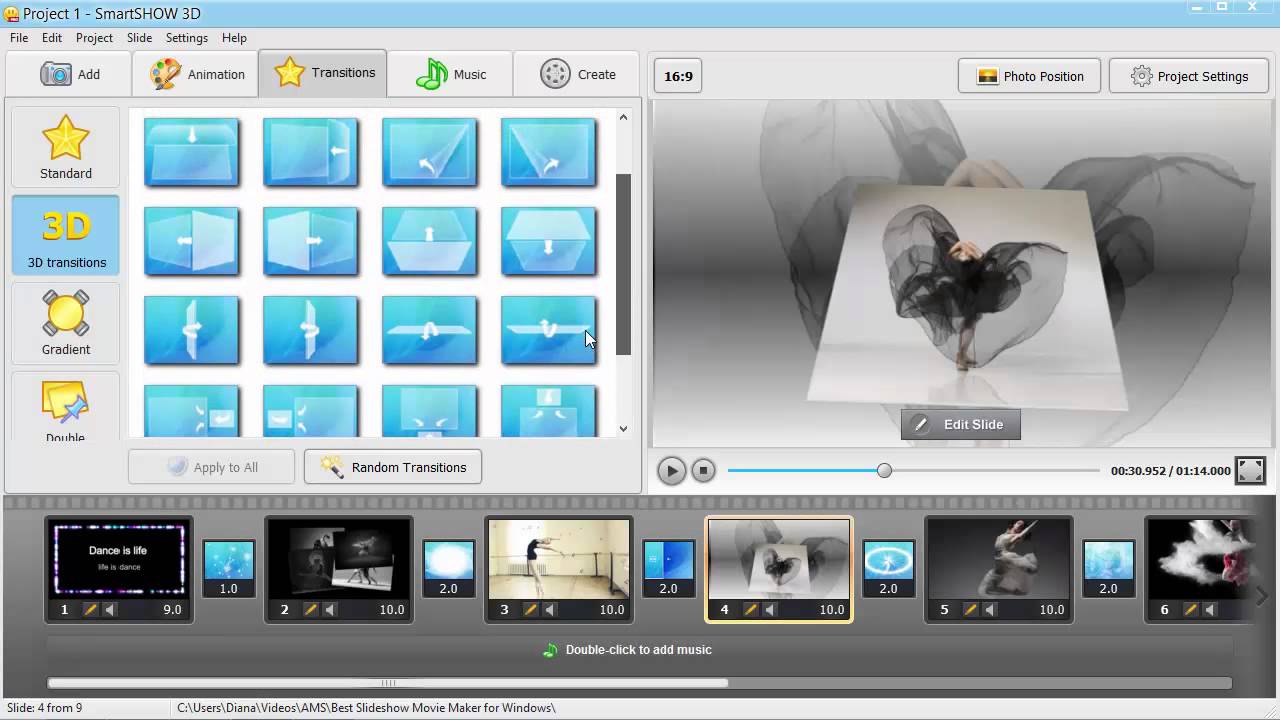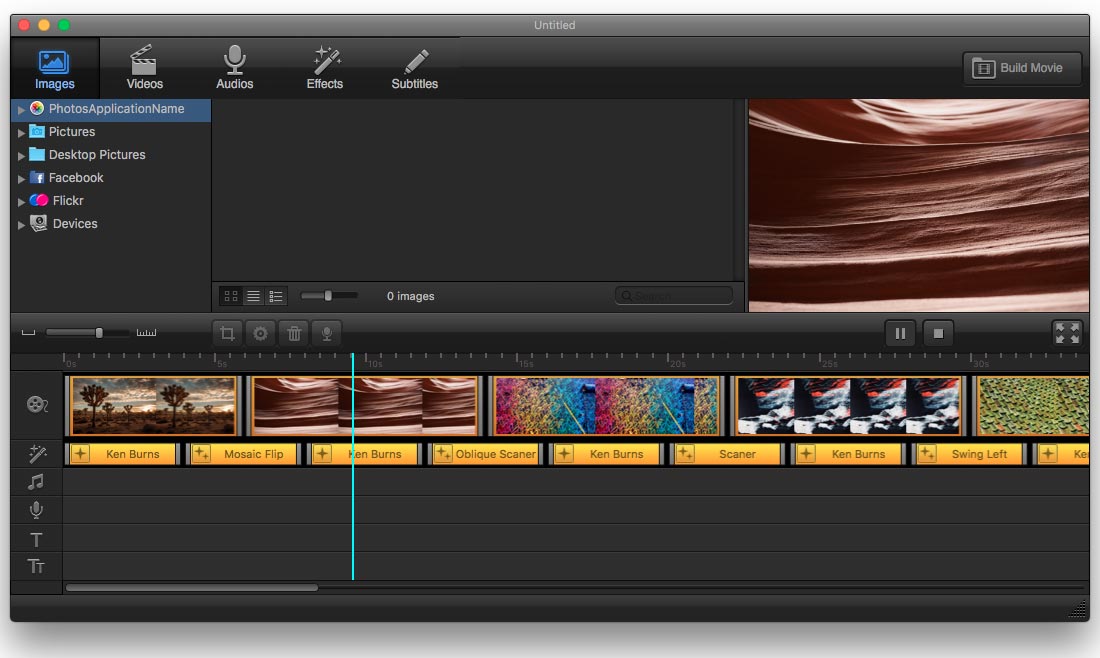


We found that, in the preview, parts of the previous image remained after the transition, staying at the edges while the next image played. The app can also publish to HTML 5, direct to cloud storage or YouTube, or with a file designed for legacy devices such as the iPhone 3G.

You can set the resolution, the file format, and even the compression engine that’s used to create the file (although there’s no h265), and there are some handy presets depending on the file size and quality you desire. Export options are excellent, from simple video files all the way up to full-blown Blu-ray discs. The app is generally quite straightforward to use, with actions such as clicking on a transition between slides on the timeline bringing up the transition palette just as you’d expect. NCH is the developer of the popular VideoPad, PhotoPad and WavePad apps, along with many others, and it has a bustling website. Drop down the Help menu, and you’ll find video tutorials, a technical support page, and a community forum. This is good enough to get you an overall impression of how things work, and the rest of the app does its best to be user-friendly. When the app first opens, you’re presented with a screen that points out the various parts of the app. (Image credit: Future) PhotoStage Slideshow 8: Ease of Use You can choose to randomize the transitions, some of which are very George Lucas, but otherwise you don’t have much control over how it comes out. Set this going, and it zips through your images, displaying each for a few seconds before changing.
#BEST PHOTO SLIDESHOW SOFTWARE FOR MAC 2016 PLUS#
There’s an automatic mode that will do all this for you, provided all your images are in the same folder, and there’s a choice of copyright-free music you can download, plus themes that place an appropriate backdrop behind your images. NCH Software PhotoStage Slideshow at NCH Software for $24.99Īs with many other apps in this particular niche, PhotoStage Slideshow 8 takes the form of an apparent video editing app, with a timeline at the bottom of the interface onto which images, music tracks, transitions and the like can be dragged.It lacks a few features you might find elsewhere, especially on Movavi Slideshow Maker 7, which has more tools and options than you’ll ever use, but the tools it does have work well, and you’ll certainly be able to create a fine slideshow using this software. It doesn’t have all the features that were added to Lion and Mountain Lion, but it’s still pretty good.That doesn’t mean it’s perfect, however. Previous versions of OS X could enter a more limited slideshow through Quick Look by hitting Command+Option+Y, so if you’re still on Snow Leopard try that instead. The zoom features are somewhat independent of the slideshow and must be enabled in order to work, this is very easy in OS X Mountain Lion & Mavericks since it can be activated with a keyboard shortcut. Hold Control key and use a two-fingered back or forward swipe in to zoom into the photo.Click “Add to iPhoto” to import the image into iPhoto.Click “Index Sheet” to view thumbnails of all images in the slideshow.Option to view smaller images at actual size.Gesture with two-fingers left to go forward, two-finger gesture right to go back.Left Arrow to go back, Right Arrow to go forward.Spacebar to pause/play the image slideshow.Option+Spacebar to launch image(s) into the full-screen slideshow mode.First: Select a picture or group of images from the desktop, then use the following:


 0 kommentar(er)
0 kommentar(er)
